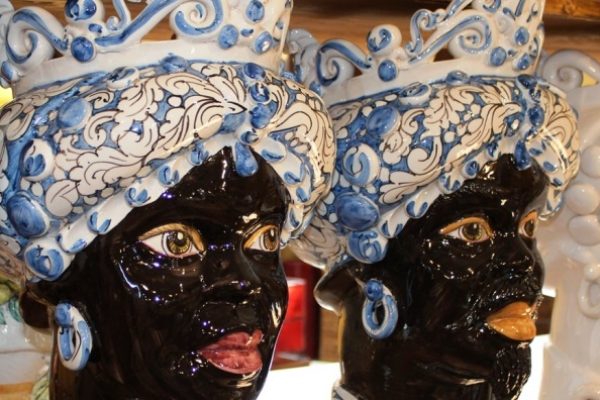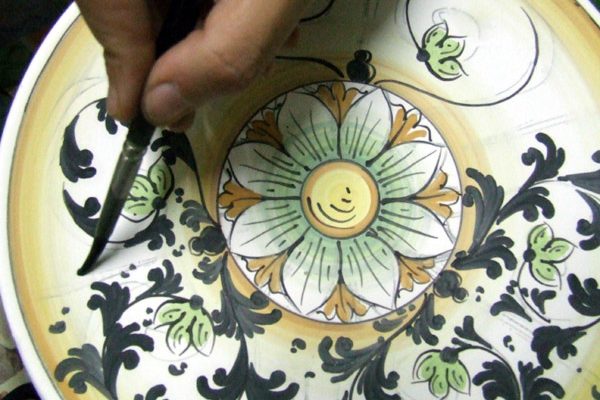Caltagirone | Sicilian Ceramics
Try as you might, it’s hard to identify a truly distinctive pottery among so many in Caltagirone. There are small workshops-cum-stores in which a single craftsperson plies his or her trade, and larger-scale producers with ample showrooms and an international mailing list. There are those offering ceramics of simple charm and those whose art is fine; those who play safe with age-old tradition and those who hazard a contemporary touch. All together, though, they uphold a proud, entirely artisanal practice dating back more than three millennia and their city’s claim to be the capital of Sicilian ceramic art. An abundance of good clay and wood to supply the furnaces accounts for the culture and economy of terra-cotta even before the dawn of history in this hilly area in south-western Sicily, and the influence of assorted conquerors or colonists (Phoenicians, Greeks, Romans, Byzantines, Saracens, the Spanish, maybe more…) explains a lot about today’s techniques, forms and decoration.
If you’re manic about ceramics and have shopping in mind, you just have to scout around. There are tiles and plates and bowls galore, vases and cachepots, table lamps and wall lamps, human and animal figures, everything you might need (and a great deal you won’t) in the kitchen and giant umbrella stands. Etc. Oh, and heads, typically Saracens’ heads but lots with paler faces too. They’re invariably ornate in form or decoration, and often in both, with repetitions of swirly patterns drawn from nature. Green, yellow and blue are the conventional, but not only, colours.
Ceramics feature outside the stores and showrooms too, in local architecture, decorating public buildings and parks, streets and squares, churches and private houses. The monumental example is the flight of 140-odd steps, the Scalinata di Santa Maria del Monte, the rises of which were faced, in 1954, with majolica tiles, a different pattern for each step, hand-made and hand-painted according to time-honoured customs. And of course there’s a regional museum of pottery, and even a museum of contemporary ceramics. Caltagirone is among those Late Baroque Towns of the Val di Noto nominated as a UNESCO World Heritage Site, so it isn’t just about pottery. And, to be fair, there are other towns in Sicily claiming the title for ceramics production, notably Sciacca (west of Agrigento on the south coast), nearby but inland Burgio, and Santo Stefano di Camastra (on the north coast, east of Cefalù).





